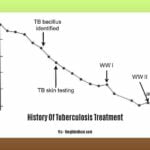Macrodontia, a condition characterized by abnormally large teeth, can affect one or more teeth, impacting both aesthetics and oral function. This comprehensive guide explores the causes, diagnosis, and treatment options for macrodontia, empowering you to make informed decisions about your oral health.
What Causes Oversized Teeth?
The exact cause of macrodontia is often a complex puzzle, with several contributing factors under investigation. While genetics likely plays a significant role, hormonal imbalances and certain syndromes are also potential culprits. Ongoing research suggests that variations in genetic instructions for tooth development may be responsible, but definitive answers remain elusive.
Genetic Factors
Just as you inherit your family’s eye color or hair texture, you could also inherit a predisposition for larger teeth. If macrodontia runs in your family, you’re more likely to experience it yourself. Think of it as a blueprint passed down through generations, sometimes with a slight variation in the tooth-size instructions.
Hormonal Imbalances
Hormonal fluctuations, particularly during childhood development, may also contribute to macrodontia. These imbalances might act like an overzealous gardener, giving the teeth too much “growth fertilizer” during their development. While the exact mechanisms aren’t fully understood, research continues to explore this connection.
Syndromes and Medical Conditions
In some cases, macrodontia is associated with specific syndromes and medical conditions, such as Klinefelter syndrome, pituitary gigantism, and Hemifacial hyperplasia. These conditions can affect multiple aspects of development, including tooth size. This association highlights the importance of a comprehensive medical evaluation for individuals with macrodontia.
Recognizing the Signs: Is it Macrodontia?
Macrodontia often presents with noticeable symptoms, ranging from visually obvious oversized teeth to more subtle signs that may require professional evaluation.
Visible Signs
- Disproportionately large teeth: One or more teeth appear significantly larger than neighboring teeth.
- Crowding: Oversized teeth can lead to overcrowding and misalignment of other teeth.
Functional and Aesthetic Issues
- Malocclusion (improper bite): Macrodontia can disrupt the normal bite pattern, potentially causing jaw pain, discomfort, and difficulty chewing.
- Speech difficulties: Oversized teeth may interfere with proper speech articulation.
- Aesthetic concerns: Macrodontia can impact the appearance of your smile, affecting self-esteem and confidence.
Diagnosing Macrodontia: The Detective Work
Diagnosing macrodontia involves a comprehensive assessment by a dental professional, utilizing various tools and techniques.
Clinical Examination
Your dentist will carefully examine your teeth, comparing them to standard size charts for your age and gender. They’ll look for any significant deviations in tooth size and assess the overall alignment of your teeth and bite.
Radiographic Imaging
X-rays provide a detailed view of the teeth, roots, and surrounding bone structure. This allows the dentist to assess the extent of the macrodontia and identify any associated dental anomalies. X-rays are especially helpful in cases of relative generalized macrodontia, where the jaw size is a factor.
Measurements and Comparisons
Dentists use specialized tools to measure your teeth precisely. These measurements are then compared to established norms for tooth size based on age and gender. Often, a diagnosis of macrodontia is made if the tooth size exceeds two standard deviations above the average.
Treatment Options: Tailoring the Approach
The optimal treatment approach for macrodontia depends on several factors, including the severity of the condition, the number of affected teeth, and the individual’s overall oral health. Your dentist will work with you to create a personalized treatment plan.
Reshaping (Odontoplasty/Enameloplasty)
For mild cases, reshaping the tooth may suffice. This involves gently filing down or polishing the tooth to reduce its size and improve its shape. Reshaping is minimally invasive but may not be suitable for severely oversized teeth.
Crowns
Crowns are custom-made caps placed over the entire visible portion of the tooth. They can effectively restore the tooth’s shape, size, and function, while also improving its appearance. Crowns offer a more significant change than reshaping but are a more invasive procedure.
Extraction
In severe cases, extraction (removing the tooth) may be necessary, especially if the oversized tooth is causing significant problems or is unlikely to respond to other treatments. This is usually a last resort, and your dentist will discuss replacement options, such as bridges, implants, or dentures.
Orthodontics
Braces or clear aligners can help to straighten and align crowded teeth caused by macrodontia, improving both how your teeth function and how your smile looks. Orthodontic treatment is often recommended in conjunction with other treatments to achieve optimal results.
Living with Macrodontia: Embracing Your Smile
Living with macrodontia can present challenges, both functionally and aesthetically. Early diagnosis and intervention are key to managing the condition effectively and minimizing its impact on your quality of life.
Psychological Impact
Having noticeably large teeth can sometimes affect self-esteem and social interactions. Seeking support from mental health professionals or support groups can be beneficial.
Oral Hygiene
Maintaining good oral hygiene can be more challenging with oversized or crowded teeth. Your dentist can provide personalized tips and techniques for effective cleaning.
Ongoing Research and Evolving Treatments
Current research on macrodontia is ongoing, and our understanding of the condition continues to evolve. This means that new and improved treatment options may become available in the future. Stay informed by discussing the latest advancements with your dentist.
Examples of Macrodontia: Visualizing the Condition
Macrodontia can manifest in various ways, from a single oversized tooth to all teeth being larger than average.
Localized Macrodontia
Imagine a smile where one of the front teeth is noticeably larger than the others. This is localized macrodontia, affecting only one or a few teeth.
Generalized Macrodontia
In generalized macrodontia, all teeth are larger than average. This is often associated with underlying genetic conditions.
Relative Generalized Macrodontia
Here, the teeth appear large due to a smaller-than-average jaw, even though the teeth themselves may be normal-sized. It’s all about the relative proportions.
Is Macrodontia Fixable?
Yes, macrodontia can be addressed effectively with various treatment options. The best approach depends on the individual case, ranging from reshaping and crowns to extraction and replacement. Early diagnosis is crucial for optimizing treatment outcomes and minimizing complications.
Delve into the mystique of the legendary Lockheed SR-71 Blackbird news and uncover captivating stories surrounding this iconic aircraft. Explore the intriguing circumstances surrounding the JFK successor NYT and the political landscape following the tragic assassination.
- Red Cloud, NE: Discover Willa Cather’s Legacy - April 11, 2025
- Remember Old Social Media Sites? Their Rise and Fall - April 11, 2025
- How many days till Feb 3?Accurate Countdowns & Tools - April 11, 2025

















1 thought on “Macrodontia: Understanding Enlarged Teeth, Causes, and Treatment”
Comments are closed.